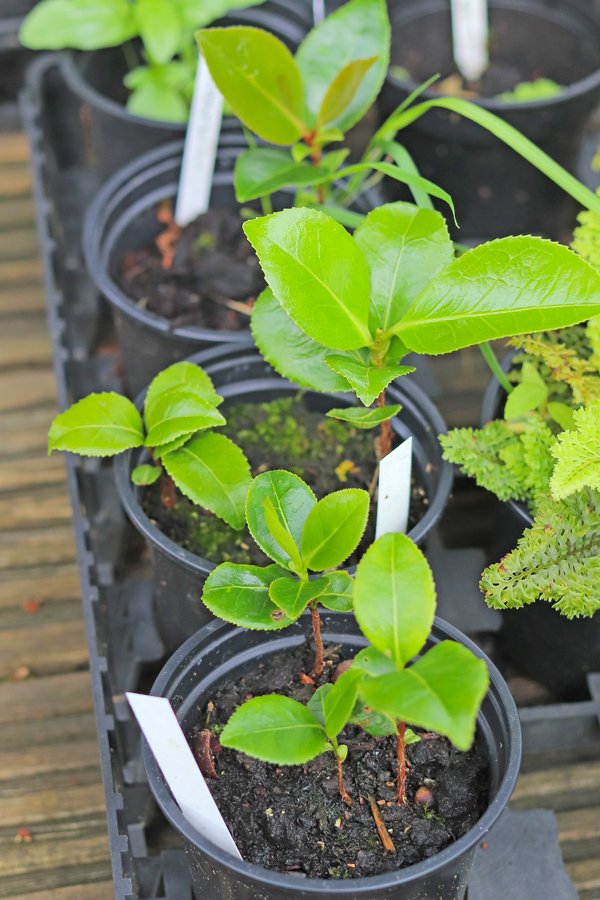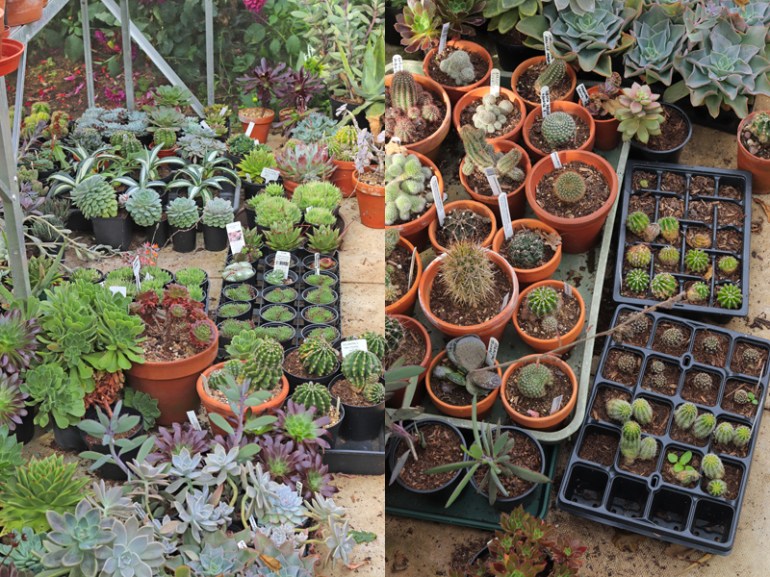First thing this morning I popped up the allotment, then on to Trago. (Bought 350g bag Onion ‘Electric’ sets, or 102 bulbs, for £1.49; they’re £3.30 for 50 in my seed catalogue, but I digress) When I got back I emptied a quantity of Camellia seeds from my pocket, thinking roughly “you sad git, you need those like a hole in the head, couldn’t you have left them where they were”.

Free seeds, of something potentially interesting or useful. Most of you will be better at resisting than I am but will still recognise the allure. They were collected when I was on my volunteer day at Mt. Edgcumbe yesterday; I was surprised to see the pots splitting open so early. I will sow them today and put them in a corner of the greenhouse where they will germinate in the spring. Last year I collected a lot and sent most of it to the Rhododendron, Camellia and Magnolia Group seed distribution. The odds and ends, just a few seeds of a variety, I kept and sowed myself. They’ll take a few years to flower and when they do most will be worthless, but you never know.

Some of the seedlings I have raised in previous years I have used as stocks for grafting Camellia reticulata varieties. These are almost impossible from cuttings and I was keen to have a go, primarily to create backup plants for the National Collection of Camellias at Mt Edgcumbe. Last August I did ten, of which 8 are still alive, a success rate I’m very happy with.
Most of the camellia propagation I do is with cuttings, taken mid July – mid August and put under mist where they will stay until spring. A few other things follow the same pattern, I have Rhodo. ‘Fragrantissimum’ and ‘Merganser’, Enkianthus and Blueberries.
The deciduous things that are just about rooted now are a problem; do I pot them up now or leave them until spring. I could do with not having to find more space and I don’t want to get very soft new growth going into the winter, I’ll probably leave them until spring. I’m referring to Hydrangeas, a few Fuchsias, Salvias, Phlomis. Ideally I’d have taken them earlier and got well established plants in 9cm pots by now but sometimes it doesn’t work out that way.
I have seedlings at much the same stage too, ready to move on from the cell trays but probably better left until spring. Sweet Williams and Aquilegias in cell trays need planting out, I’ve been putting it off because the ground is so dry.

Some seed raised plants made it into 9cm pots. The nurseryman in me wants to call them liner pots, that being what liners come in within the industry. The word liner dates back to when young plants were lined out in fields to grow on, in most cases these days they would go into a 2 or 3 litre pot to be grown on for a season before being sold. So I have good liners of Digitalis parviflora, Roscoea hybrids, Begonia grandis evansiana (pink and white), various Fuchsias and both seed and cutting raised Camellias. Most of these will need winter protection. Fuchsias at that size need protection from wet and cold, Camellias will die if the roots freeze. Other things will go in my tunnel, keeping them drier but not much warmer.
I have seeds sown but not germinated on my sand bed. Anemone nemorosa and Primula vulgaris I will put in the fridge for a spell in winter, then back on the bed, hopefully they will then germinate. Other things will mostly stay where they are and if they germinate will be left until spring before being dealt with. Perennials can take an age to germinate, keeping down weeds and moss can be the biggest problem.
Sue is just as bad as me, unable to remove the offsets from her succulent collection without potting them up and filling the space needed for the plants that go outside for the summer and need to come back in for winter.

The other big problem is what to do with all these young plant when they’ve been grown. In most cases where I grow from seed from the garden, I don’t really want any more than I have already. Some get given away, we’ve done the odd car boot and a couple of craft fairs but the surplus output from a garden is not really enough to mount a proper sales display.
My second allotment was where the Dahlia seedlings went. I was looking at Chilterns catalogue online and they breezily say that all their dahlias can be grown as half hardy annuals that will flower in their first year from seed. It’s true too, provided you sow them early and keep them growing. Mine have been from home collected seed up til now but I’m tempted to buy a seed mix.

It’s very likely that my camellia seedlings will get planted out to grow on until they flower and possibly also that some of my small camellia pot plants will get plunged to protect the roots from freezing. They’ll be safer outdoors on the allotment than in my tunnel.
Why do I do it? It must partially satisfy my procreative drive. Can I blame my genetic inheritance? As soon as humans moved beyond being hunter gatherers, the need to procreate their plants and animals was as important as procreating themselves.












You need a little kerbside shop Jim! About phlomis: I have tried cuttings and seed, neither successful. What time of the year is best for cuttings?
LikeLike
I got a couple of cuttings of Phlomis italica to root, taken 12 July. The key is to keep them humid enough not to wilt, but dry enough not to rot, which they are very prone to do. I put mine under a quite large glass cloche on the floor of the glasshouse, out of direct sunlight. Bottom heat tends to produce condensation which leads to rotting too. Mid summer to mid winter according to the book, it presumably doesn’t matter much. The kerbside shop idea might fly if we weren’t at the top of a cul-de-sac.
LikeLike
Mm, yes, a cul-de-sac won’t do it! Thanks for the info on Phlomis, Jim.
LikeLiked by 1 person